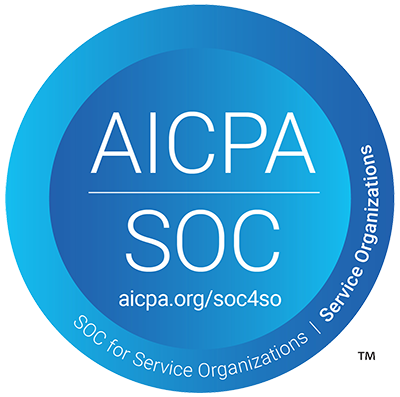Wondering about the difference between methadone and buprenorphine? Liz shares her personal experience with both.
Disclaimer: This is a personal account of the author’s experiences with two medications. For a more comprehensive discussion of the benefits, drawbacks, and side effects of methadone or buprenorphine, please speak with your medical provider.
I have benefited from medication-assisted treatment for opioid use disorder.
As a medication-assisted treatment (MAT) patient, I am grateful to the many advocates sharing research and facts in order to dispel misconceptions about methadone and buprenorphine. Today, however, I want to offer you something different. I’m sharing my personal experiences with both medicines, which I took at different points in my recovery.
As you’re reading this, please remember that different bodies may have different reactions to the same chemicals, and that this is my personal experience. You may have different experiences with methadone or buprenorphine. I am an advocate for both medications.
Methadone (full opioid agonist)
Methadone was the chemical that kick-started my recovery from heroin addiction. I was prescribed it during early pregnancy so that my growing fetus would not be exposed to the dangerous highs and lows that come along with illicit opioid abuse. I began on 20mg daily, and slowly increased to 60mg. Before getting on methadone, I was in a constant cycle of detoxing and then relapsing, often overdosing in the process. Methadone provided me the stability to begin my recovery journey in earnest.
Because a woman’s metabolism changes so drastically during pregnancy, there is some evidence that pregnant women and their babies do better with split dosing of methadone, rather than a single dose in the morning. This was not offered by my clinic, but had it been available, it may have reduced some of my symptoms, such as fatigue three hours after dosing.
“Getting high” and other side effects of methadone I experienced
- Methadone “high:” I felt a slight physical euphoria for the first few days of using methadone. The infamous “legal high.” It was neither overwhelming nor debilitating, nor did it last. Four days into treatment, when the long-acting opioid stabilized in my system and the short-acting opiates I’d been abusing were totally flushed out, I was no longer feeling anything from the methadone that could have been classified as pleasurable.
- Fatigue: I was extremely fatigued while on methadone. The three-hour mark after dosing was especially bothersome. The fatigue lasted about 45 to 90 minutes each day.
- Impaired thinking: I labored to think as clearly as usual, but it was far from the mind-numbing experience of an opiate high. I just felt slightly less sharp than normal.
- A need for psycho-social treatment: Like many people who become addicted to opiates, I have a trauma history. Methadone did not provide the emotional numbing I was used to from heroin, so some of my worst Post-Traumatic Stress Disorder symptoms flared up while I was on methadone. The methadone isn’t to blame for that; I was simply no longer masking my PTSD with a euphoric chemical. My clinic would have been wise to recommend counseling for my trauma.
- Methadone “high” x 2: After my baby was born, my methadone dose became instantly too high for my suddenly lighter body. This was the only time I felt truly impaired from methadone. It was not a good feeling. I was delirious; hallucinating people who weren’t there, “nodding out” constantly, and unable to stay awake, bond with my daughter, or even talk. It was not a euphoric feeling. It had all the lack-of-control of a heroin high, without any of the pleasure. Once I tapered down to half my dose after childbirth, I felt normal again.
Buprenorphine (partial opioid agonist)
After I stopped taking methadone, I experienced another traumatic event and relapsed on heroin for about a month. I decided to try buprenorphine, and after discontinuing it for a period, I reached a stable dose of buprenorphine/naloxone (Suboxone).
Side effects of buprenorphine I experienced:
- Low sex drive: I experienced a noticeable decrease in my sexual desire when I started taking a therapeutic dose of buprenorphine/naloxone. It was significantly harder for me to become aroused or to enjoy sex.
- Tiredness: While I don’t feel the same overwhelming fatigue that I did with methadone—I don’t “nod out”—I often have a feeling of general tiredness throughout the day. I would attribute this to caring for two toddlers, but other people in my peer support group describe the same feeling.
- No euphoria whatsoever: Buprenorphine is a partial opioid agonist and doesn’t fully activate the opioid receptors in the brain. I have never experienced a “high” from buprenorphine when taken therapeutically. I personally found the induction period somewhat uncomfortable.
- Slight decrease in PTSD symptoms: Although I still have a significant need for trauma therapy, I feel less emotionally volatile than I did when I was not on buprenorphine—even during periods of total abstinence. A study done on combat veterans showed that buprenorphine may help with PTSD. This is one reason why I am considering staying on buprenorphine long-term.
Without methadone, I would probably not be sober today. For me, the transition between heroin and methadone was more comfortable than with buprenorphine. Methadone provided me the biological stability that allowed me to have a healthy baby, and to begin my recovery.
For me, buprenorphine/naloxone has ultimately been a better choice. It causes fewer side effects than methadone while helping to manage my drug cravings and correct trauma and drug-use-related brain changes. For some, methadone may be a better choice, but for me, buprenorphine has been a better fit as well as more accessible.
If you are struggling to overcome an opioid addiction, you aren’t alone. Agonist medications like methadone and buprenorphine can make the process easier. It’s important to discuss options with your medical provider, and also keep a close eye on your own reaction to your medication so that you can create a treatment plan that is tailored to you.








